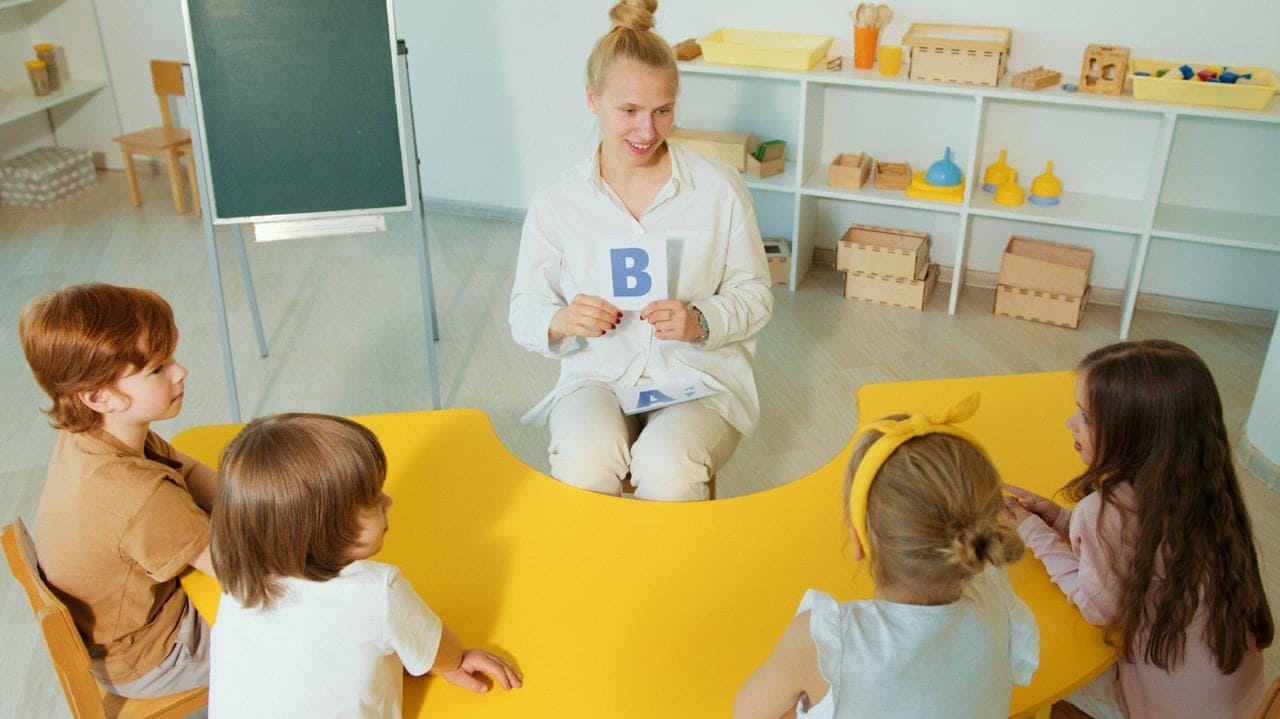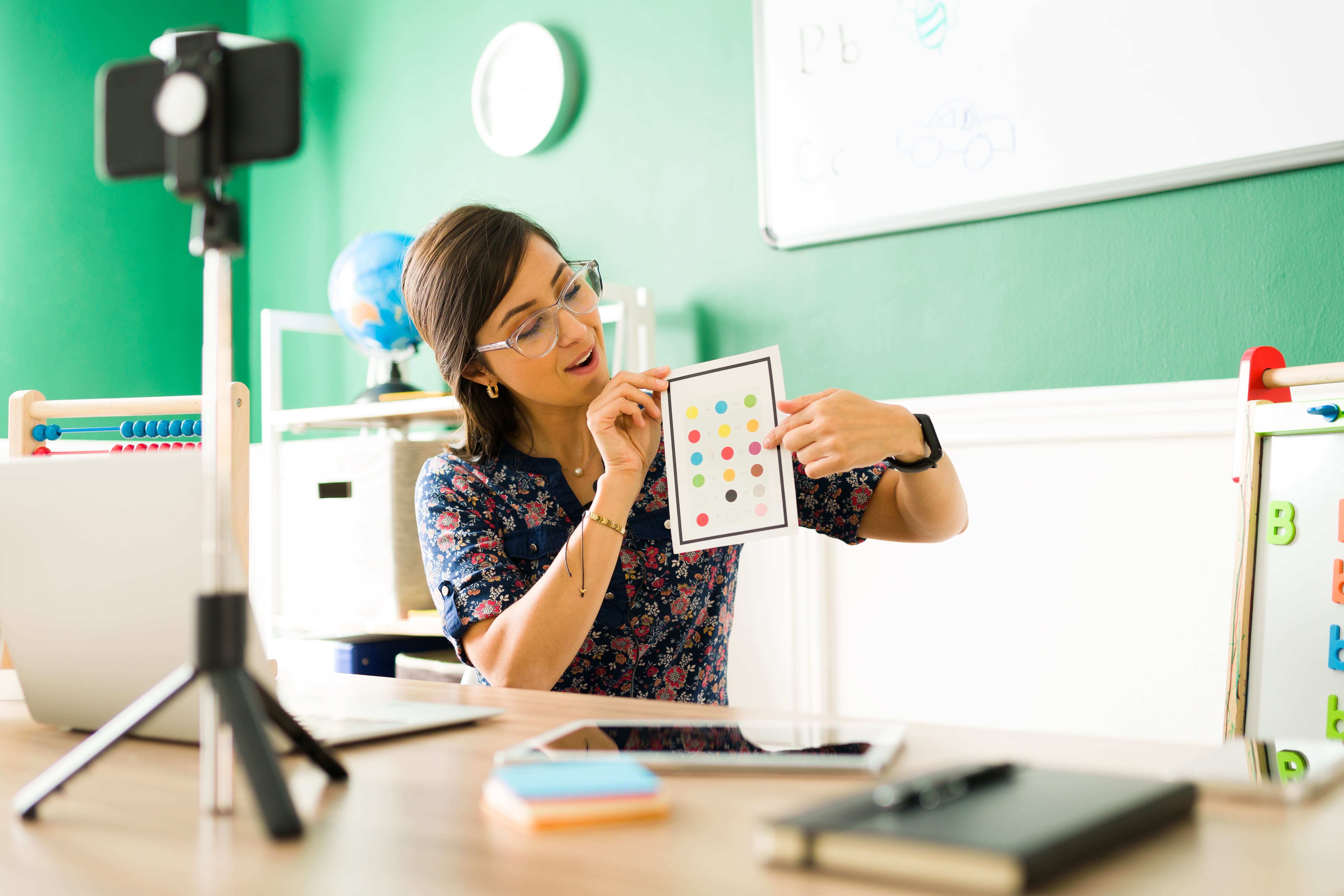One of the ways of checking understanding
- Vocabulary
- Grammar
- Teaching qualifications
- Tips & Strategies
- Methodology

28.09.2022
Teachers have been using flashcards in their lessons for so long that you might wonder what new ideas we might come up with.
Today, we are sharing some practical ideas on how to create exciting lessons and engage your students using this tool.
Although the conventional use of flashcards is memorization only, we are sure those two-sided cards are a perfect tool to help you elicit, introduce, practise, and revise lexis and grammar as well as to encourage your students to produce target language in a safe context. And here is why:
Flashcards are often used to teach vocabulary and grammar to young learners. However, we can also use them to teach adults who have just started their learning journeys.
Flashcards are usually used for the presentation of the new language. What are the stages of presenting new words and grammatical structures?
When presenting new lexical items, we have to set the context first. Do this by showing a flashcard to students. Next, elicit the word by asking "What's this / what are these?". Your students may be giving different ideas if they don't know the right word. After this, provide a word by saying, for example, "It's a roller coaster". Check understanding of the concept by asking students CCQs. For example: Is it a small railroad? (Yes) Can you find it in the amusement park? (Yes) Does it have open cars? (Yes) Does it go up and down? (Yes) Do the cars travel slowly or fast? (Fast). When you make sure learners understand the meaning, drill pronunciation. Students have to repeat the word after a teacher a few times. The last step of the presentation is to focus on form. Write the word on the board or show it on a flashcard.

Now, let's look at how to use flashcards at the stage of grammar presentation. There are four steps to follow:
Go to our online course, 'Using Flashcards in ELT', and you will find the whole unit with detailed explanations of the tutor and video demonstrations of how to present grammar and vocabulary to your students.
Using flashcards in ELT
Online course for English teachers
The next stages after we present lexis or grammar are practice – controlled and freer.
Controlled practice is a stage of the lesson when learners practise using the target language in a restricted context. Such activities are aimed at building accuracy. They re-enforce a specific language point and require a particular answer from the student.
Freer practice is a stage that comes next after the controlled practice and is aimed at building fluency. Such activities allow learners to use the new language more freely and flexibly together with their existing knowledge.
Flashcards can be exploited in various ways for both controlled and freer practice.
Give students different flashcards. One for each.
As the teacher reads the story, students have to raise their flashcards every time they hear a word they have on their flashcards.
Ask your students to make a circle. They can sit or stand. Give flashcards to random students, but not to everyone. The teacher plays a piece of music, and while it's playing, students pass the flashcards around. Once you pause the music, students who have flashcards in their hands have to name what they have. If the student cannot say the word, he/she sits down in the middle of the circle.
This game is great fun for young learners. Show students a flashcard and name the word on it, for example, 'banana'. Next, ask a question, but insert the word from the flashcard in it 'How banana are you?' Students have to answer 'I am banana fine', for example.
Ask two students to come out in front of the class. They have to stand back to back. Give them two different flashcards. When they are, ready, start counting down with the rest of the class 'Five.. four…three…two…one…FIRE!' The students' task is to turn around immediately as they hear 'fire' and name what's on their partner's flashcard. It's going to be a blast!
This game is perfect for practicing yes/no questions and short answers.
A teacher or one of the students is a Wolf. Stand at one end of the classroom and hold a flashcard so that the other students can see it.
Other students stand in a row at the other end of the classroom.
The Wolf asks students yes/no questions about the item on the flashcard. For example, 'Is it big/small?', 'Can it fly/walk?' depending on the structure you are practicing.
If students answer 'no', they have to make one step forward. Their goal is to reach and tap the wall behind Wolf's back on the other side of the classroom.
When students are very close to the Wolf, the Wolf asks a question to get a 'yes' response. When students answer 'yes' the Wolf has to chase them and tag them out before they could touch the wall. Those students tagged by the Wolf leave the game.
Repeat everything with a new flashcard. The last one standing wins.

This activity works well for practicing both the vocabulary and grammar you've learnt.
Pull flashcards from your pile and give them to each student. The student has to make a sentence using the grammar point specified with that card.
For example, if the flashcard you pull out has a picture of a giraffe on it, and the grammar point you specified is the simple past, the student might produce the sentence 'I saw a giraffe in the zoo last week'.
This activity works well with beginner and pre-intermediate students.
Writing: Give students 5-6 flashcards and ask them to write a story using the words. As a scaffolding task, the teacher prepares a story with the flashcards used there instead of words. Students will read the story and use it as a model for their writing.
Speaking: The same can be done in speaking practice. Provide students with flashcards (or students can choose the ones they like) and ask them to tell a story using the grammar they have been learning.
For other activities and ways to use flashcards, take our online course 'Using Flashcards in ELT'. You will also learn what is a 'good' flashcard, how to make your own flashcards, and will be better able to use flashcards as an effective tool in your teaching practice.
Yulia Chorna
Author
DELTA Module 1, CELTA certified teacher of General & Business English
Comments
Leave your comment